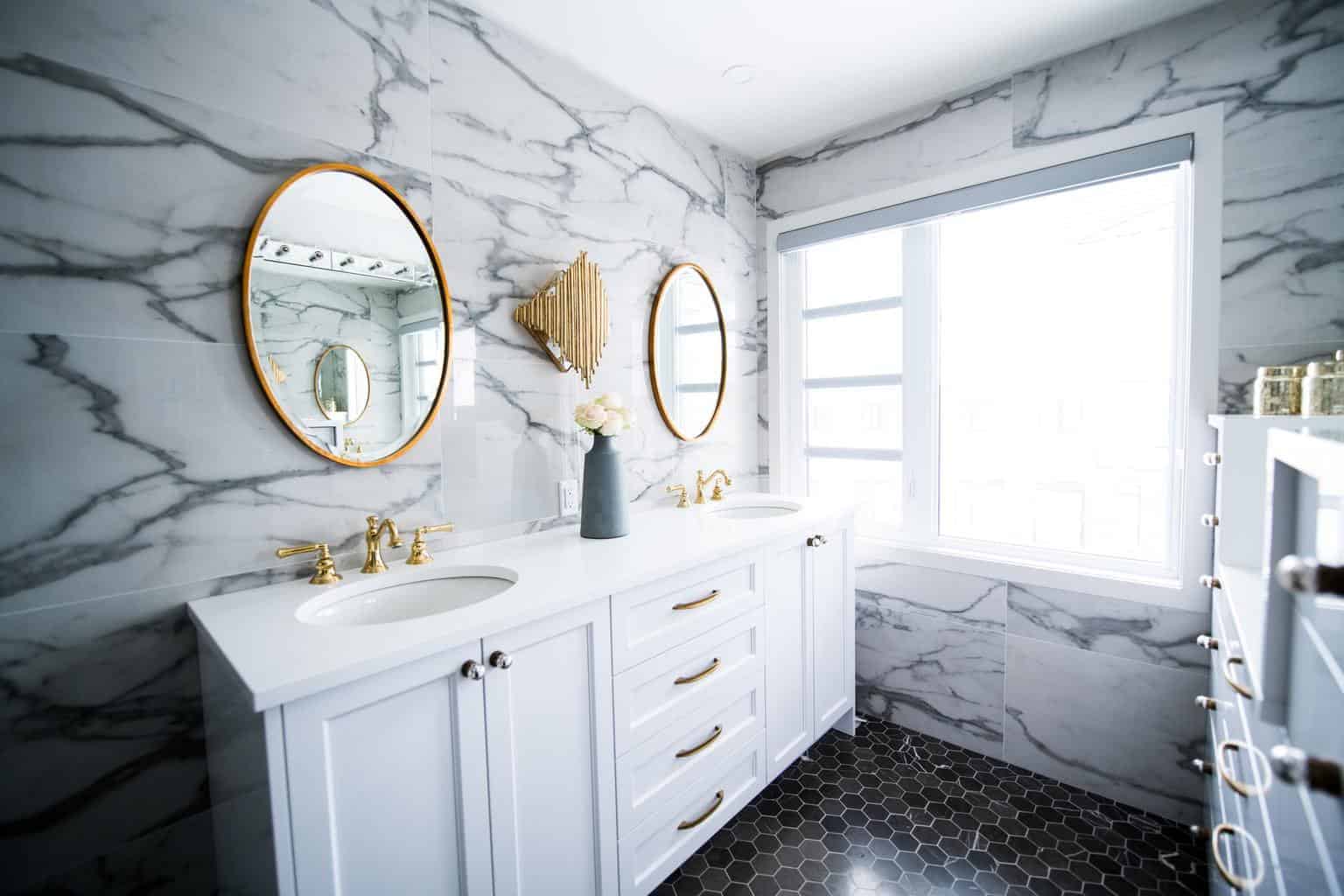Are you thinking about adding a bathroom to your home? Before you start searching for contractors, it’s best to get an idea of estimated costs and financing options to fund your home improvement. This guide will help you take the stress out of planning for a bathroom addition.
What is a Half Bathroom?
A half bathroom, or powder room, is a small bathroom that includes a mirror, a wall-mounted sink, and a toilet. It is commonly found in common areas or in locations where guests congregate in the home.
The Benefits of Adding a Half Bathroom To Your Home
There are a few key benefits of adding a half bathroom to your home:
- Convenience: If you have friends and family over often, a half bathroom in an easily accessible location is beneficial as they can relieve themselves without entering your personal space.
- Low-maintenance: Most half bathrooms only take up a small amount of space, so they’re much easier to tidy up than a full bathroom. You won’t have to spend hours scrubbing the tub and floor or organizing the storage closet.
- Increases your property value: Your property value could rise by around 10 percent if you add a half bath in the right part of your home.
Based on these factors alone, this popular renovation could be a worthwhile investment.
Places in Your Home Where You Can Add a Half Bathroom
Still, pondering the best spot in your home to add a half bathroom? If you can convert an existing room, closet, or laundry room, you’ll likely save a bundle. Otherwise, you can consider adding a half bath in the hallway near the front of the home, beneath the staircase, in the game room, basement, or garage.
How Much Does It Cost to Add a Full or Half Bathroom?
Once you’ve decided where you want to add a bathroom to your home, the next step is to run the numbers.
Costs to Consider
Your estimated costs will depend on the type of bathroom you want to install, the level of detail, and the quality of materials. Expenses also vary by location as contractors assess different rates, and supply costs aren’t the same throughout the country.
Some costs to keep in mind:
- Bathtub (including installation)
- Cabinets (including installation)
- Drywall
- Electrical (including breaker panel, switches, outlets, and wiring)
- Exhaust fan (including installation)
- Faucets
- Tile flooring (including installation)
- Glass Shower Door
- Lighting (including installation)
- Painting
- Permits
- Plumbing
- Shower (including installation and bath liner)
- Tile backsplash (including installation)
- Toilet (including installation)
- Towel Racks (including installation)
- Vanity (including installation)
Beyond supplies and labor, you also want to consider demolition costs (if applicable). They can range anywhere from $1,000 and $2,300.
Average Cost of Adding a Full or Half Bathroom
On average, homeowners spend between $5,000 and $15,000 to add a half bathroom to an existing area and $10,000 to $30,000 to construct a half bath in an added space.
The price increases to around $15,000 and $35,000 to add a full bathroom to an existing space or a new space in your home, respectively.
How to Finance the Cost of Adding a Full or Half Bathroom
Are you planning to pay cash for your home improvement project? You can likely negotiate with the contractor performing the bathroom renovation to get a better deal.
Homeowners usually use these methods to fund bathroom renovations:
- Traditional cash-out refinance: You can pull equity from your home to pay for the addition, but you’ll have to refinance your existing loan. The amount you borrow is rolled into the new loan, which means your mortgage payment will be higher. And you could get a higher rate than you had before.
- Construction loan: These loan products also require you to refinance, and the closing costs are sometimes much higher. Another drawback is the draw process that’s required to secure funding with a construction loan.
- Credit card: Unless you get a credit card with a 0 percent introductory APR, paying with a credit card could be costly. You’d have to pay the card in full before the promotional period ends to avoid interest charges, or your bathroom remodel, or addition, could cost much more than expected.
- Home equity loans and lines of credit: With a home equity loan or home equity line of credit (HELOC), you can borrow up to 90 percent of your home’s equity minus the amount owed on your mortgage. The problem is this option isn’t viable for new homeowners or those with properties that haven’t appreciated enough to tap into their equity.
- Personal loan: The application process for personal loans is relatively straightforward, and you could receive a lending decision rather quickly. However, these loans often have rates between 8 and 15 percent and come with short repayment periods. So, you could get stuck with a monthly payment that stretches your spending plan a bit too thin.
- Home improvement loan: A home improvement loan is simply an unsecured personal loan. It often comes with the same high-interest rate and a brief repayment period that you’ll get with a traditional personal loan.
Consider your credit score and history, the amount of equity you have in your home, your current debt load, desired repayment period and monthly payments, and the amount you wish to borrow to determine which financing options are best. Ultimately, you want to compare the benefits and drawbacks of each to make an informed decision that works for your budget.







